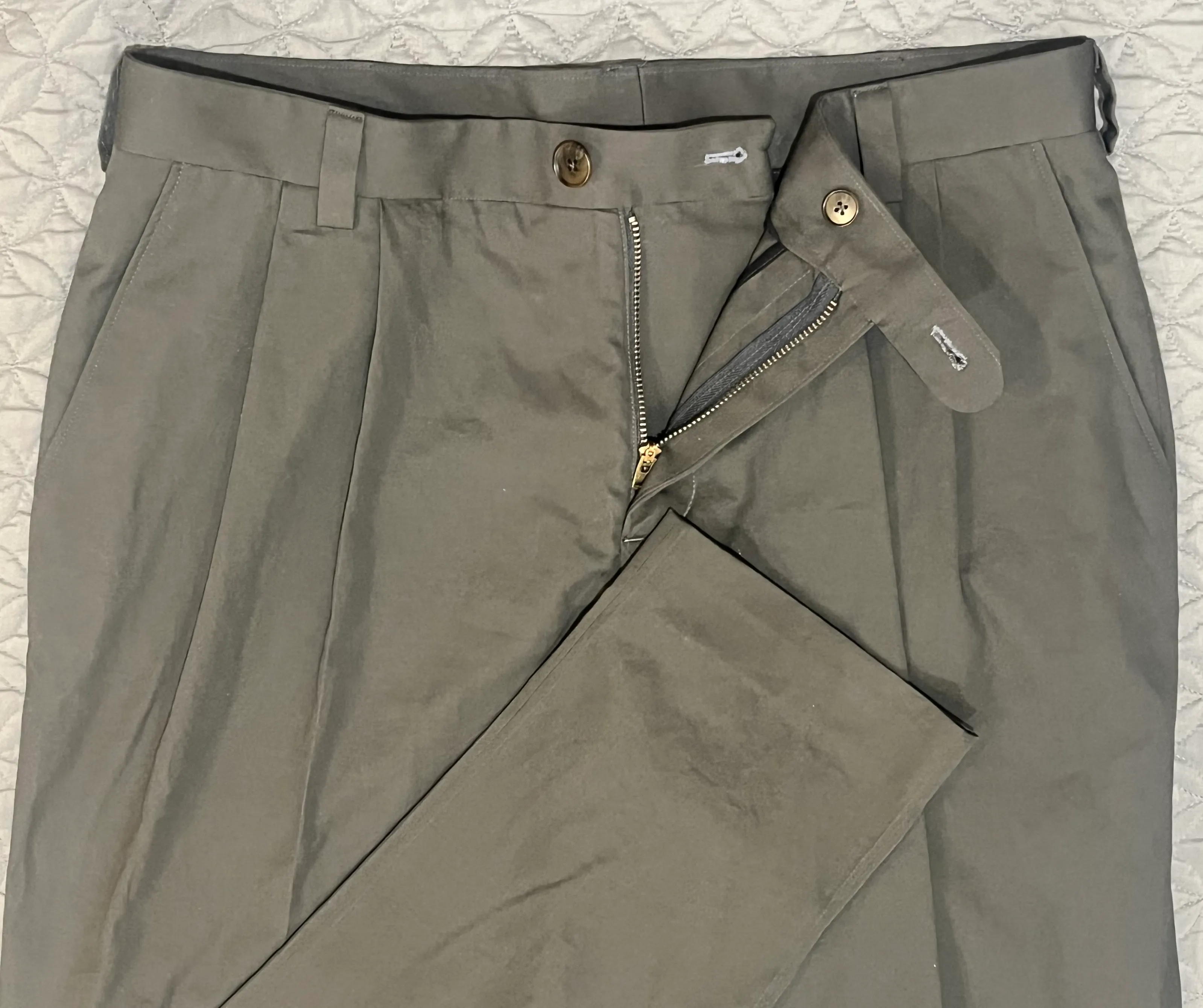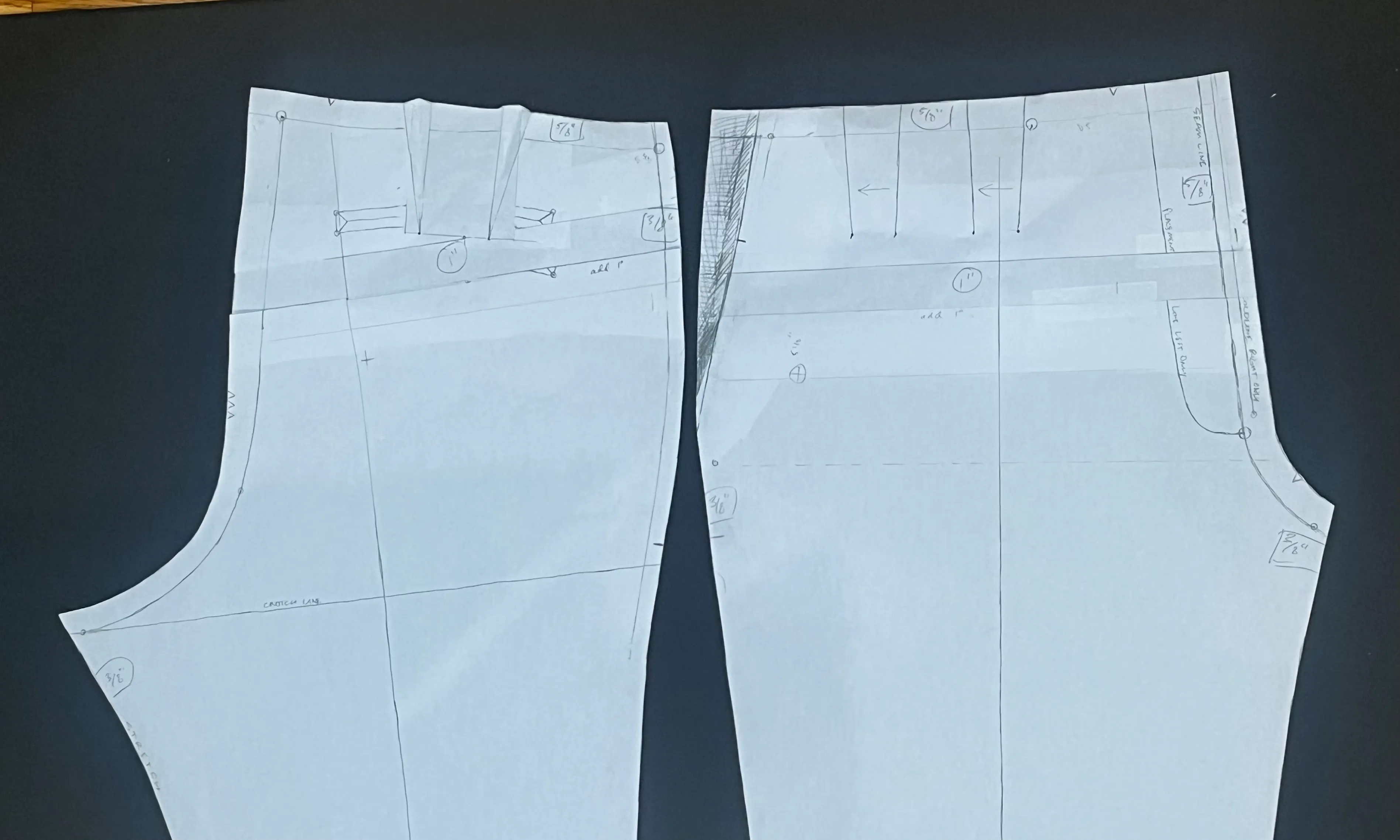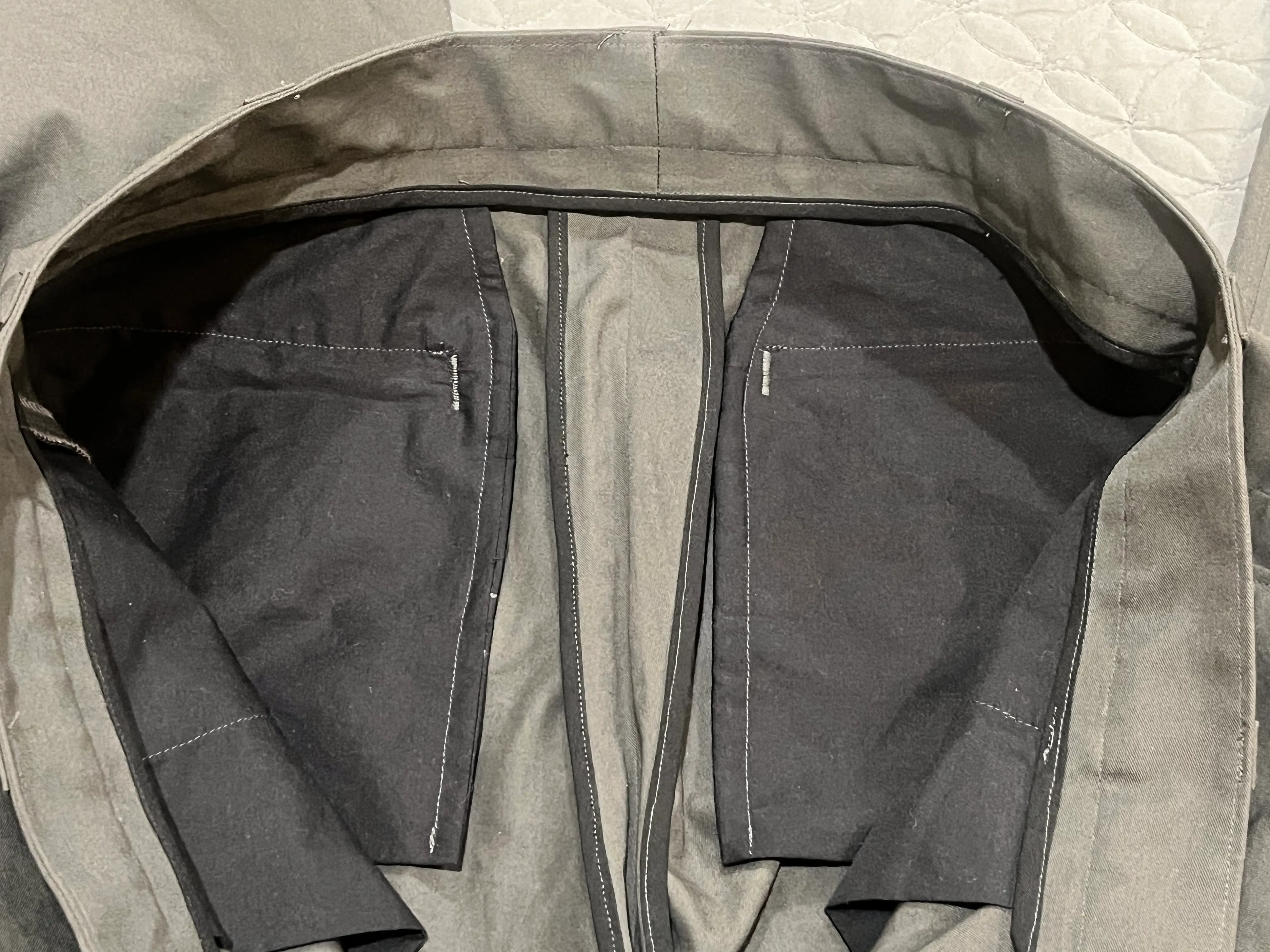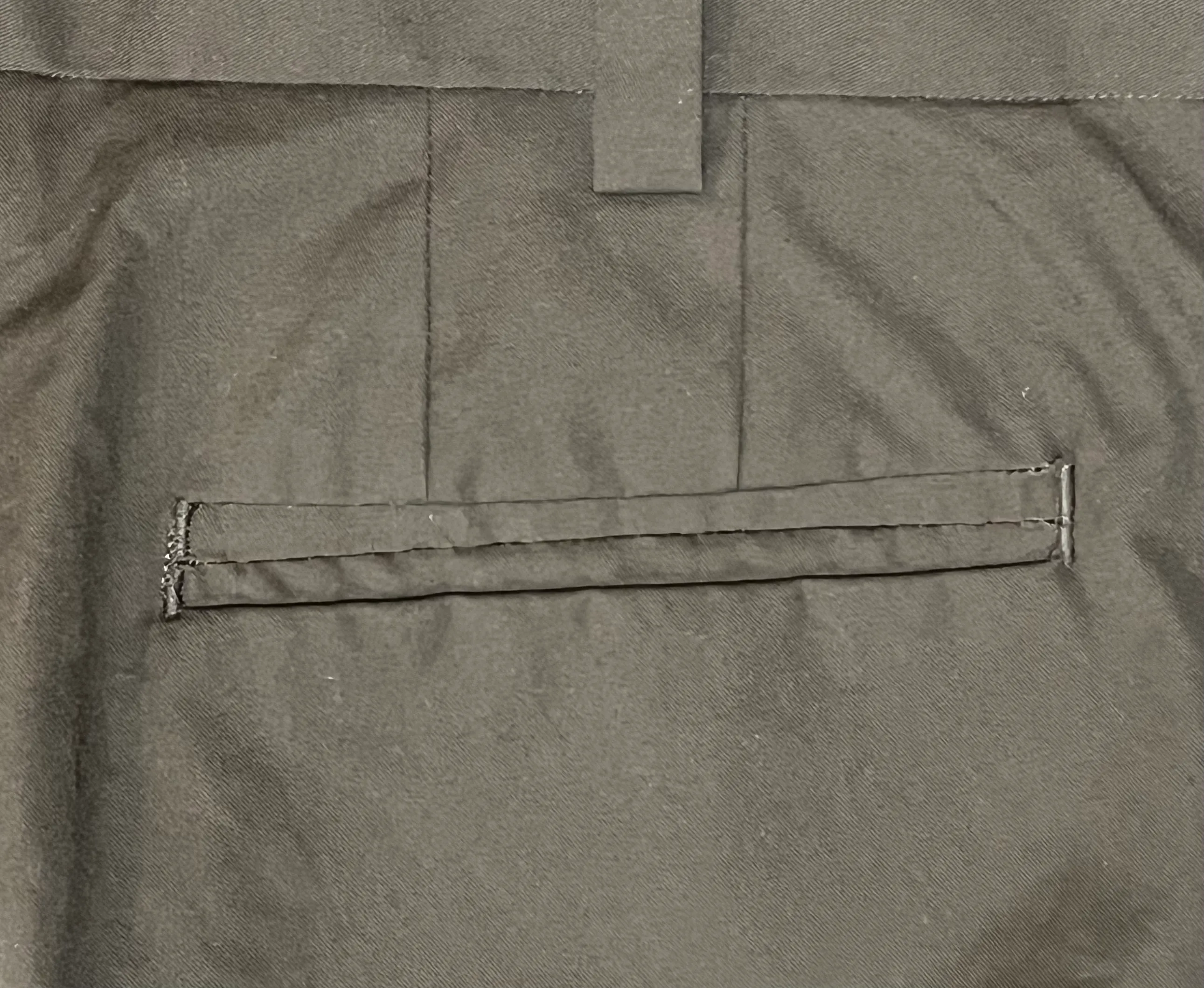Double Pleated Trousers in Charcoal Cotton Twill

About this Series
Welcome to the first post of my Home-Sewn Wardrobe series, where I’ll be documenting my journey in creating a basic collection of garments from scratch. Will I succeed in building a complete, functional wardrobe? Or will I throw in the towel, disillusioned by the reality of how time-consuming, expensive, and difficult home sewing is compared to buying ready-made garments? Stick around to find out!
Jokes aside, I just want to highlight that I am not doing anything special here. I’m just sharing my experience of doing home sewing in an era where it just isn’t done much anymore. That being said, lets start the series off with a pair of pleated trousers!
Method
This is the first pair of pants I’ve made that include front pleats. I’m hoping that the pleats serve as a good way to add some comfort in the upper leg, as I can never seem to find pants that fit my thigh right.
Pattern
The fabric I used was a lightweight (166 gsm) charcoal twill at $14.50/yd (44”). The base pattern was view A of Vogue’s V1996. I like the pattern, but it doesn’t include many facing pieces. After making a toile, I made the following adjustments:
- Raised the waistline by 1”
- Reduced the leg length by 1”
- Fitted the waistband
- Redrafted all secondary components (waistband, front and back pockets, and fly pieces) to match my favorite ready-to-wear article.
Construction
For the double welted pockets, I basted the pocket bag to the inside of the garment before installing the welts such that the cut pocket edges are enclosed in the pocket bag after being turned inside. This mimics all of the RTW garments I’ve seen, but for some reason doesn’t seem to be common in home tutorials.
All other construction steps roughly followed the pattern directions. To do a bias bound center seam, I attached the beginning of the bias tape to the front piece as I was working the fly (as the turned fly facing partially obstructs the center seam edges). The side seam and inseam were serged, and all other seams were either self-finished or finished with bias tape.
The buttonholes and belt-loops were hand-stitched. Topstitching was kept to a minimum.
Reflection
The Good
- I really like the pattern’s zipper fly method. I think I’ll use this from now on.
- I’m very satisfied with the interior finish. Ironically, it looks better than the outside.
- The fit is comfortable and doesn’t look bad.
- I got pretty comfortable doing some hand-stitching. It makes me much less worried about working in the wrong order.
To Improve
These are just some personal notes:
- The fabric choice was bad. The unwashed sample I had was nice, but after washing off the sizing it holds too many wrinkles, it drapes poorly, and it also just does not feel very nice at all.
- I would probably add more ease down the leg for this style of pants.
- I don’t think I increased the rise correctly. For future adjustments I should increase the length of the darts and also have them take in less of the waist.
- Fix the pocket bag so that it hangs straight down.
- The back pockets were kind of a disaster. I was pretty sloppy and made a lot of careless mistakes. I ended up sewing them shut.
Takeaway
I am fairly satisfied with my work, though the fabric choice really kills the project. I somewhat knew this would happen after pre-washing the fabric, but I was in denial since the yardage was already bought. In retrospect, I should’ve just cut my losses and used the fabric for scrap or in a quilt. I’ll keep the piece in my wardrobe until I sew a replacement.




